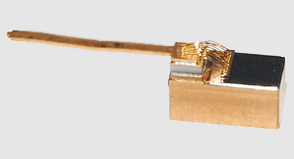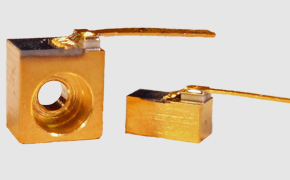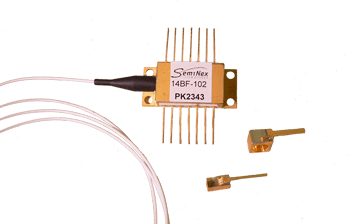WHAT IS A DIODE LASER?

The word LASER is actually a verb, not a noun, which stands for Light Amplification by the Stimulated Emission of Radiation. While there are various kinds of lasers, SemiNex Corporation manufactures diode lasers, which are created by introducing impurities to the surface of a crystal wafer and altering a semiconductor’s electrical properties. Where the layers on the wafer meet, charge carriers combine and the electrical current in the laser’s energy is released as light. Diode lasers are small and require little input power.
BENEFITS OF DIODE LASERS
Compared with other lasers, diode lasers are relatively inexpensive. They are also capable of producing high output power relative to their size.
SEMINEX INFRARED DIODE LASERS

SemiNex Corporation manufactures, packages, and distributes infrared laser diodes between 1300nm and 1700nm (1.30µm to 1.70µm). SemiNex lasers use high precision indium phosphide (InP) semiconductor materials to convert electrical energy directly and efficiently into coherent optical energy. SemiNex’s proprietary material structure uses a unique doping profile and a non-conventional application of quantum physics that provides superior performance in thermal efficiency, electrical efficiency, and total optical power.
APPLICATIONS FOR LASER DIODES
Laser diodes can be used in a variety of industries. Applications for laser diodes at visible and infrared wavelengths are listed below. Follow the links for more detailed information.
- Free space optical communications – see Infrared Lasers and 1450 nm laser diodes
- Military Range Finding – see 1550 nm laser diodes
- Autonomous Vehicles – see LIDAR
- Spectroscopic sensing
- Aerospace welding
- Nonablative skin treatments – see Infrared Lasers, 1450 nm, and 1550 nm laser diodes
- Blood coagulation
- Noninvasive surgery – see 1350 nm laser diodes
- Healing of wounds (heat/light therapy)
- CD/DVD reading technology – see 1310 nm laser diodes
- Laser printing
TYPES OF LASER DIODES
Double Heterostructure Diode Laser
A double heterostructure diode laser is created when low bandgap material is fitted between two layers of high bandgap material. A bandgap is an energy range in a solid object without and electron states. Junctions between bandgap materials are referred to as “heterostructures.” In a double heterostructure diode laser, the active region exists in the thin middle layer, allowing more electron-hole pairs to aid in light amplification.
Quantum Well Lasers
A quantum well is created when the middle layer is extremely thin, quantizing the vertical variation of the electron’s wavefunction. Quantum well diode lasers have a good efficiency because the abrupt edge in the quantum well system concentrates electrons in energy states that contribute to laser action.
Quantum Cascade Diode Lasers
A quantum cascade laser utilizes the difference in quantum energy levels for the laser transition instead of using the bandgap, allowing for long and easily tuned wavelengths.
Separate Confinement Heterostructure Lasers
A separate confinement hetereostructure laser is made when two additional layers are added on the outside of a quantum well laser’s original three layers. The middle layer in a quantum well laser can be too thin to confine light, so additional layers with a low refractive index have to be added in order to effectively confine light.
Distributed Feedback Lasers
A distributed feedback laser has a diffraction grating etched near the p-n junction in the diode to stabilize the wavelength. The grating is essentially an optical filter which causes a single wavelength to bounce back to the gain region and laser. In this system, facet reflection is no longer needed, so at least one facet in a distributed feedback laser is anti-reflection coated. These lasers have stable wavelengths because the wavelength is determined by the pitch of the grating.
For more detailed information on laser diode types, consult the EDU Photonics Overview of Commercial Laser Diode Devices.
Visit our Products Page for more information on SemiNex’s laser diode product offerings. To request a quote or to find out more about our products, visit our Customer Service Page.





